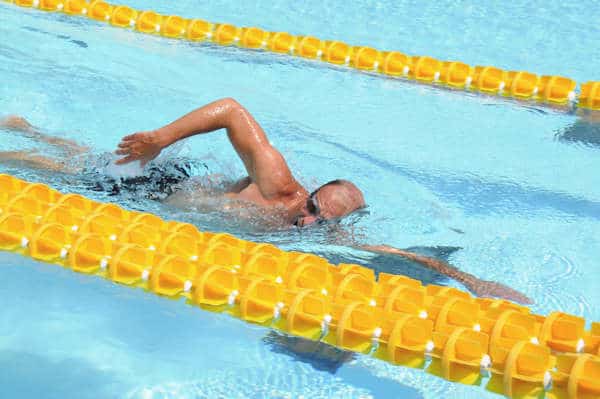Beginner’s Guide to Swimming
As pools open, and kids are home, you might be thinking about teaching your child to swim.
If you or your kids are ready to learn how to swim, we’ve got some great info!
Swimming is a valuable skill as swimming has so much to offer people of all ages. If you’re ready to add this great exercise routine to your life, check out this beginner’s guide to swimming.
Not only is it a great workout that’s easy on the body, it makes you feel better, too. Swimming is perfect for all fitness levels from beginner to expert. It’s also great for people who suffer from arthritis or those who need low impact activities.
If you’re ready to get started, this guide is a good beginning! So, grab your bathing suit and let’s get to work.
First, let’s take a peek at the different types of strokes.
Meet the Swimming Strokes
It just takes a few strokes to get you swimming. It’s a good idea to learn all of them because they each have something to offer and work different muscles.
You’ll find the following three strokes are the best for varying your workouts:
- Freestyle – this is the most basic of strokes and one most people learn first. You are in the pool face down, kicking and swimming arm-over-arm.
- Backstroke – another popular stroke, you lie on your back, kicking while rotating your arms.
- Breaststroke – Think of a frog, and you’ll know what the breaststroke looks like. You’ll use wide arm and leg movements while moving your head in and out of the water.
Meet the Swimming Gear
Swimming doesn’t take a lot of gear, but your comfort starts with a quality swimming suit. You want one that lets you move easily, and one that stands up to pool chemicals.
It’s easiest to swim laps in a one-piece swim suit for women because you don’t have to worry about anything falling down.
Here are a few other items to invest in:
- Swimming fins – these give your legs an extra workout while increasing your power.
- Goggles- keep your eyes clear and water free. This is especially important if you wear contacts.
- Swimming caps – if you swim a lot, it can help protect your hair while helping you be more streamlined in the pool.
- Ear and nose plugs – optional, but a must for some people.
- Kickboard – this is good if you want to work on your legs and kicking.

Time to Swim
As you learn to swim, be patient. Not only are you starting a new exercise program, but you’re also learning new strokes or perfecting current ones.
Here’s how to get started:
- Start by treading water. This is great exercise all on its own.
- Do some laps with your kickboard.
- Work on your breathing technique while using the kickboard.
- Learn the different strokes.
No matter your age, you can find someone to teach you to swim. From established businesses in town, to people teaching from their own homes, ask around and see who your friends and family recommend.
A swim instructor can help with your breathing and technique and set you on the road to success.
Beginning Lap Swimming
Once you’re proficient in the water, it’s time to start swimming laps.
Not sure where to get started? Consult your instructor or check out the following:
To Conclude
We’re going to leave you with a few more reasons why swimming is so beneficial.
First, it’s a total body workout. It increases endurance, works your heart, muscles and builds strength.
Swimming is low impact, so it’s great for people who can’t work out on land.
Lap swimming burns calories, and is great for those looking to lose weight or maintain it.
Finally, swimming feels great!
Photo credit: Fort Rucker via Visualhunt.com / CC BY



